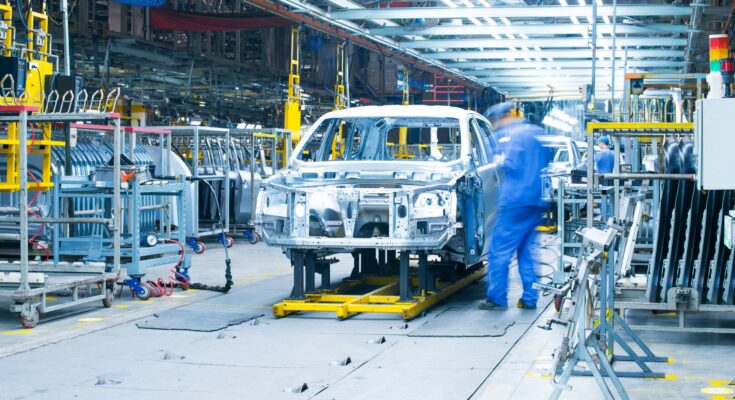Navigating the Future of the Automotive Industry
The automotive industry stands on the cusp of unprecedented change. Rapid technological advancements, shifting consumer behaviors, and mounting environmental concerns are reshaping how we think about mobility. The year 2024 is set to be a pivotal moment for this sector, with significant challenges on the horizon. But with challenges come opportunities for innovation and growth.
In this post, we’ll explore the top five challenges the automotive industry faces in 2024 and beyond. We’ll discuss electric vehicle adoption, autonomous driving technology, global supply chain disruptions, sustainable practices, and shifts in consumer behavior toward mobility services. By understanding these obstacles, industry professionals, enthusiasts, and technology adopters can better prepare for the exciting road ahead.
The State of the Automotive Industry in 2024
The automotive industry is undergoing a seismic transformation. Traditional combustion engines are giving way to electric powertrains, and driving is becoming increasingly automated. Consumers are demanding more sustainable and efficient solutions, and regulatory bodies worldwide are enforcing stricter environmental standards. These changes are driving innovation at a pace never seen before, but they also present significant hurdles.
For industry professionals and enthusiasts, staying updated on these trends is essential. Understanding the evolving landscape helps in making informed decisions, whether it’s about investing in new technologies or adapting to shifting market demands.
Electric Vehicle Adoption and Infrastructure
Current Status of EV Adoption
Electric vehicles (EVs) are no longer a niche market. Sales have surged globally, driven by advancements in battery technology, decreasing costs, and growing environmental awareness. However, widespread adoption still faces several barriers, including range anxiety, high upfront costs, and limited charging infrastructure.
Potential Solutions to Boost EV Adoption
To overcome these challenges, governments and private companies are investing heavily in charging networks. Innovations in battery technology are also extending the range and reducing costs. Incentives and subsidies can further encourage consumers to make the switch to electric.
Future Implications for the Industry
The shift toward EVs represents a fundamental change in the automotive landscape. Manufacturers must adapt their production lines, and suppliers need to rethink their components. This transition also opens up new markets and opportunities, particularly in renewable energy and smart grid technologies.
Autonomous Driving Technology and Regulations
The State of Autonomous Technology
Self-driving cars are no longer science fiction. Companies like Tesla, Waymo, and Uber are at the forefront of developing autonomous driving systems. Despite significant progress, several technical and regulatory challenges remain.
Navigating Regulatory Hurdles
One of the biggest obstacles is the lack of standardized regulations. Governments worldwide are grappling with how to ensure the safety and reliability of autonomous vehicles (AVs). Clear guidelines and international cooperation are crucial for the widespread adoption of AVs.
The Road Ahead for Autonomous Vehicles
The future of autonomous driving holds immense promise. It has the potential to reduce traffic accidents, increase road efficiency, and provide mobility solutions for those unable to drive. But it requires collaboration between tech companies, automakers, and regulators.
Global Supply Chain Disruptions
Understanding Supply Chain Vulnerabilities
The COVID-19 pandemic exposed the fragility of global supply chains. The automotive industry, reliant on a complex network of suppliers, faced severe disruptions. These challenges highlighted the need for more resilient and flexible supply chain strategies.
Strategies to Mitigate Disruptions
Companies are now focusing on diversifying their supply sources, increasing local production, and implementing advanced technologies like AI and blockchain for better transparency and efficiency. Building a more agile supply chain is critical to withstand future shocks.
Long-term Impacts on the Automotive Industry
A robust supply chain is essential for the industry’s stability and growth. By adopting more resilient practices, companies can ensure a steady supply of components, minimize delays, and reduce costs. This will be crucial as the industry continues to innovate and expand.
Sustainable Practices and Environmental Regulations
The Push for Sustainability
Sustainability is no longer optional; it’s a necessity. The automotive industry is under immense pressure to reduce its carbon footprint. From manufacturing processes to end-of-life disposal, every aspect of vehicle production is being scrutinized.
Implementing Sustainable Solutions
Automakers are adopting greener manufacturing practices, investing in renewable energy, and developing recyclable materials. Electric and hybrid vehicles are also central to reducing emissions. Collaboration with environmental organizations and adherence to regulations are vital.
Future Sustainability Goals
Achieving sustainability goals will require continuous innovation. The industry must stay ahead of regulatory changes and consumer expectations. Sustainable practices not only benefit the environment but also enhance brand reputation and customer loyalty.
Consumer Behavior Shifts Towards Mobility Services
The Rise of Mobility as a Service (MaaS)
Consumer preferences are shifting from owning vehicles to using mobility services. Ride-sharing, car-sharing, and subscription models are gaining popularity. These services offer convenience, cost savings, and flexibility.
Adapting to New Consumer Demands
Automakers and service providers must adapt to these changing preferences. Developing user-friendly platforms, ensuring vehicle availability, and offering competitive pricing are key strategies. Partnerships with tech companies and urban planners can enhance service delivery.
The Future of Mobility Services
Mobility services are poised to transform urban transportation. They can reduce congestion, lower emissions, and provide equitable access to mobility. The industry must innovate to meet these demands while ensuring profitability and sustainability.
The Role of Innovation and Technology in Overcoming Challenges
Driving Innovation Forward
Innovation is the lifeblood of the automotive industry. Advancements in AI, machine learning, and IoT are driving the development of smarter, more efficient vehicles. These technologies are also enhancing manufacturing processes and supply chain management.
Leveraging Technology for Competitive Advantage
Companies that leverage cutting-edge technologies will have a competitive edge. Investing in R&D, adopting agile practices, and fostering a culture of innovation are essential. Collaboration with tech firms and startups can also accelerate progress.
Future Trends in Automotive Technology
The future holds exciting possibilities. From connected cars to autonomous fleets, technology will continue to redefine the automotive landscape. Staying ahead of these trends requires a proactive approach and a willingness to adapt.
Case Studies and Examples of Pioneering Companies
Tesla’s Electric Revolution
Tesla has been a trailblazer in the electric vehicle market. Its focus on innovation, quality, and customer experience has set new standards. Tesla’s Gigafactories and Supercharger network exemplify its commitment to overcoming EV adoption challenges.
Waymo’s Autonomous Vision
Waymo is leading the charge in autonomous driving technology. Its extensive testing and partnerships with automakers highlight the potential of AVs. Waymo’s work with regulators is paving the way for safer, more reliable autonomous vehicles.
Rivian’s Sustainable Ventures
Rivian is making waves with its electric adventure vehicles. The company’s focus on sustainability, coupled with innovative design, is attracting attention. Rivian’s partnership with Amazon for electric delivery vans showcases its potential to drive change.
Conclusion
The automotive industry is at a crossroads. The challenges of 2024 and beyond are significant, but so are the opportunities for growth and innovation. By understanding these challenges and leveraging technology, the industry can thrive.
Adapting to change and collaborating across sectors will be crucial. The future of mobility holds immense promise, and those who are prepared to innovate and evolve will lead the way.
We’d love to hear your thoughts on the automotive industry’s future. Share your insights and solutions with us. Together, we can drive forward into a brighter, more sustainable future.




4at126